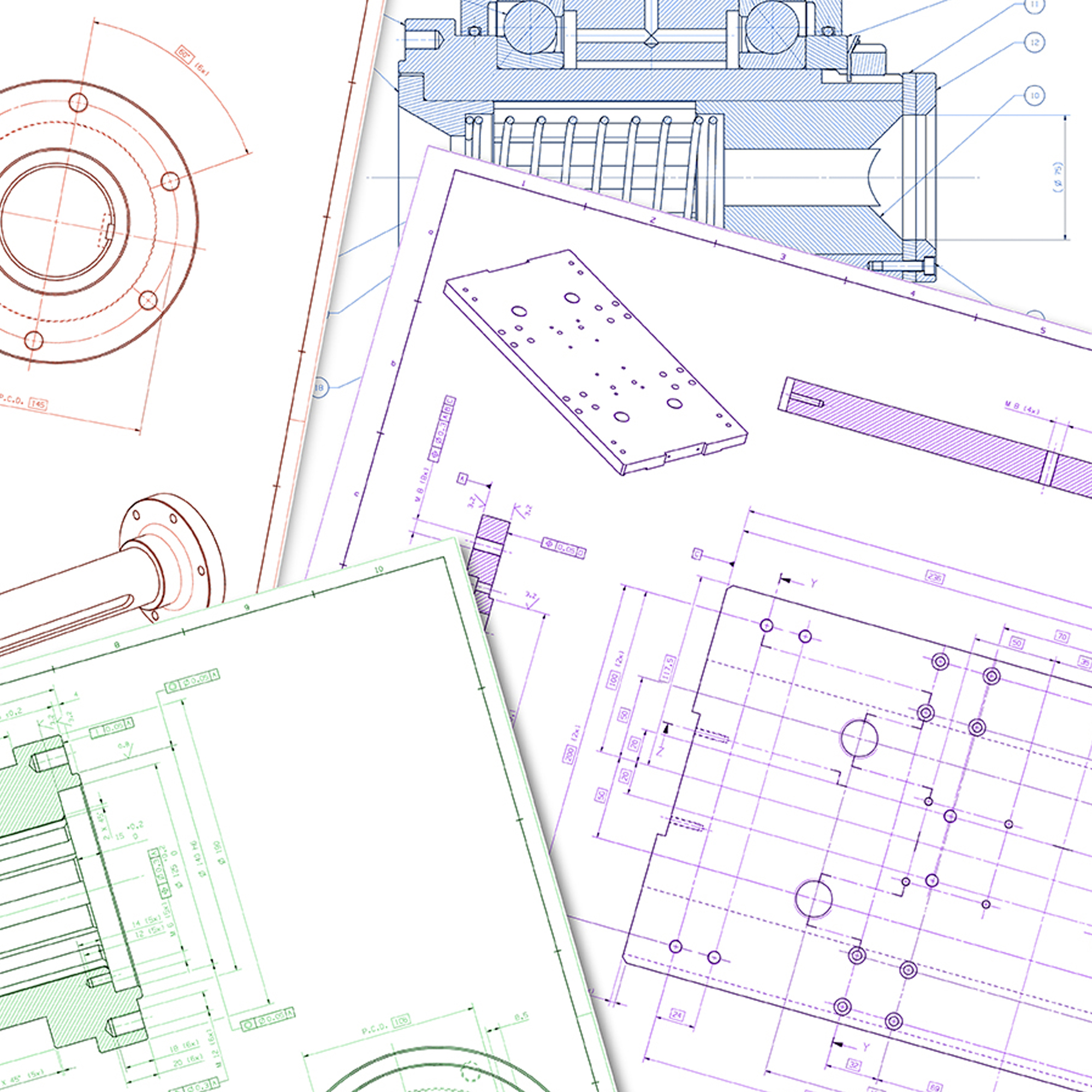Course Description
SmartGD&T Intermediate Course
Building Your future
Intermediate SmartGD&T for Design, Manufacturing + Inspection (24 Classroom Hours + 2 Practical Application Days)
Goals
To provide participants with a thorough grasp of the following topics:
1. The purpose and essence of GD&T
2. The perfect imaginary world of GD&T
3. The imperfect real world of machine parts and their features
4. The things which can go wrong with machine part features: Form, Size, Orientation and Location
5. The GD&T tool kit provided by the ASME Y14.5M 1994 & 2009 standards
6. The functions of Nominal, Basic and Reference dimensions
7. Cartesian coordinate systems, Degrees of Freedom and the Right Thumb Rule
8. The Envelope Rule, the Free State Rule, the Rule of Simultaneous Requirements, the Rule of Composite Feature Control Frames, the Rules of Datum Feature Simulator Management, and the Rules of Natural Datum Reference Frame establishment.
9. The capabilities and applications of the most important Geometry Control Tools (Surface Profile, Position, Perpendicularity, Diameter, Width, Dimension Origin. Flatness)
10. The Feature Control Frame reading and “decoding” processes
11. The Datum Reference Frame establishment process
12. “Material Condition” concepts and modifiers, including the tolerance zone size and tolerance zone mobility modifiers (S), (M) and (L), and their effects

The objectives and benefits of GD&T versus the limitations of the classical tool, namely “±”, for managing machine part geometry, including how to:
1. Encode and decode (i.e. read, not interpret) GD&T drawings in order to:
a. Assess design functionality
b. Communicate design objectives
c. Plan manufacturing and inspection processes
2. Understand and apply the concepts, tools and rules for:
a. Datum Reference Frame definition and establishment
b. Tolerance zone size, shape, orientation and location specification
c. Beginning Tolerance Stack-Up Analysis
3. Visualize the pathology of real objects and how such pathology can be:
a. Limited by functional application of GD&T
b. Controlled by well conceived manufacturing processes
c. Assessed with coordinate measuring machines or other inspection tools
The primary goal of the course is to build participants’ abilities to reliably “encode” and “decode” (i.e. not interpret) GD&T in accordance with the ASME Y14.5M 1994 and 2009 Standards. In particular to learn how to:
(1) research the functional objectives of assemblies, piece parts and individual part features, in order to then
(2) Encode those objectives using GD&T tools to:
a. Assess design functionality
b. Communicate design objectives
c. Plan manufacturing and inspection processes
(3) “encode” those objectives by imposing fault tolerant limits of imperfection to:
i. guarantee assembly and operation and
ii. communicate design requirements unambiguously to manufacturing and inspection.
These goals are accomplished through intimate familiarization with the concepts, tools, rules, processes and best practices of GD&T, and skill building in Datum Feature selection, Datum Reference Frame definition, Geometry Control Tool selection and tolerance zone size, shape, orientation and location management.
Duration & Presentation Options:
This course is normally delivered in three consecutive classroom days, and two consecutive application days. Depending on the number of participants and travel logistics, the classroom and practical sessions may also be delivered in half day segments.
Who Should Attend:
All persons with significant responsibilities for Product Design, Drafting, Tool Design, Machining, Manufacturing, Manufacturing Management, Manufacturing Process Control, Inspection, Gage Design, Coordinate Metrology, Robotic and manual Assembly, even including team members with significant experience, in order to refresh their knowledge and discover new and important fundamental concepts. Management is also encouraged to include several members of the internal GD&T Advisor team, in order to encourage them to test their skills leading exercises and discussions.
Prerequisites:
Participation in the course “Beginning SmartGD&T”, and working familiarity with GD&T, “blue prints”, and manufacturing, metrology and assembly processes.
Preparation:
Participants are encouraged to come armed with lists of questions on topics which have created design, manufacturing, inspection or assembly difficulties in their experience. In case the course customization option is ordered, each participant is encouraged to submit at least one drawing which represents some of her or his current GD&T concerns. These should be collected and reviewed by the in-house course coordinator and made available to the instructor well in advance for preparation. Participants are encouraged to bring pencils with erasers (not pens), and pads to class.
Course Materials:
Course handouts include a dedicated course manual and, based on client preferences, copies of the SmartGD&T Pocket Guide and SmartGD&T Encoding Process Guides for each participant, as well as the use of SmartGD&T student training model sets.
Confidentiality:
In the case of in-house corporate classes, a non-disclosure agreement must be implemented between the sponsor and SmartGD&T Training and Consulting, LLC. prior to inception. Drawings and parts brought to public classes should be non-proprietary in nature.
Syllabus
Day 1:
1. What is GD&T?
2. A grand review of GD&T concepts, tools and rules, including BASIC dimensions, geometric characteristics and their associated tolerancing tools, Feature Control Frames, tolerance zones, Datum Features, Datum Targets, Datum Feature Simulators, Datums and Datum Reference Frames, the concept of Size and the Envelope Rule, the concept of Tolerance Zone Size and Mobility modifiers [(S), (M), (L)], the Virtual Condition, and Feature Control Frame decoding.
3. The Perfect Imaginary World of GD&T
4. The Perfect Imaginary World of Coordinate Systems, their Degrees of Freedom and their Components
5. The Imperfect Real World of Physical Parts
6. The Degrees of Freedom constraining abilities of Features and their component Parts
Day 2:
1. Feature Control Frame Anatomy Review and Decoding Exercises
2. Introduction to the Encoding Process and Feature Control Frame “Stuffing”
3. Controlling and assessing Size
4. Material Condition Modifiers: Tolerance Zone Size and Tolerance Zone Mobility modifiers and the functions they encode.
5. Virtual in-space and Virtual in-material Boundary concepts and exercises
6. Fixed and floating fastener applications
7. In-depth skill building in defining and constructing Datum Reference Frames, including Datum Feature selection, the Rules of Datum Feature Simulator Control, the Rules of Natural Datum Reference Frame construction with extensive exercises
Day 3:
and and 1. Controlling and assessing Form (Flatness, Straightness, Circularity, Cylindricity)
2. Controlling and assessing Orientation (Parallelism, Perpendicularity, Angularity)
3. Controlling and assessing Location (Position, Circular Runout, Total Runout, Surface Profile, Section Profile and Dimension Origin)
4. Implementing the Encoding Process in Practical Examples
5. Beginning Tolerance Stack-Up Analysis
6. Discussion and analysis of participants’ drawings
7. Grand Review
8. Special Topics as time allows: the Projection Modifier, the Tangent Plane Modifier, Free State Modifier, Bilateral Position Tolerancing, Composite Feature Control Frames, Incremental Form Control, etc.
Application Days 4 and 5:
Practical sessions applying GD&T across the board in Design, Manufacturing and Inspection based on client projects, including encoding and decoding of client drawings, the best practices for Geometry Control Tool and modifier selection, and practice in basic tolerance stack-up analysis. It is here that the potential, internal GD&T Advisor team will have multiple opportunities to apply and refine their skills with instructor support.
let’s get connected
Have a Question?
Do you have questions on the courses or looking to sign up?
Get in touch today!

